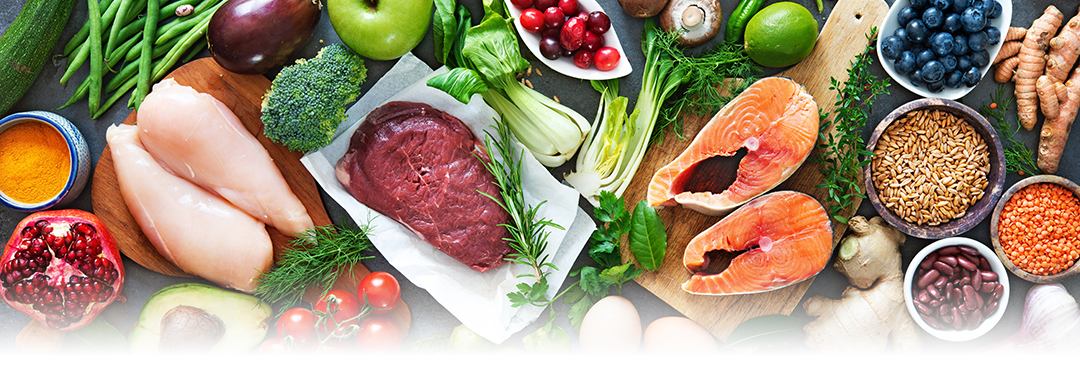
Joint Pain: The Nutrition Connection
It is hard to deny that nutrition plays a role in healing and joint pain. In years past, nutritional deficiency diseases were common, especially in children when the demand for nutrients is higher. Among these diseases, rare today in the United States, are “rickets” (softening of bones because of inadequate vitamin D); scurvy (poor wound healing, joint pain, caused by inadequate vitamin C); beriberi (poor muscle coordination, nerve degeneration, caused by lack of vitamin B1), and the list goes on. If you think about it, these are really magnified problems which can occur at a lower level if the deficiency is small. Symptoms might not be as severe as these disease states, however just enough to affect the quality of healing. Other situations may also occur, such as the need for a particular nutrient has increased because of lifestyle, stress, or injury. In those cases, blood testing for known “deficiencies” will show normal results, however there really is a shortfall. This may then impact healing or create other unfavorable phenomena.
It is certainly clear that specific essential minerals and micronutrients play a role in the ability to repair injured connective tissue and joints properly, and their absence will result in a less than ideal healing environment.
However, there is controversy as to what degree nutrition is important. Part of the controversy is a result of genetic differences between individuals that make responses to nutritional treatment or diet variable—i.e., some people seem to eat whatever they want without adverse consequences, where others are extremely sensitive. However it is undeniable that since we put food in our mouths every day, and certain nutrients are required by our bodies for good health, nutrition should not be ignored or overlooked.
Different opinions exist as to what is the best diet. It has also been suggested that lack of enough fruits and vegetables, and too many refined foods and sweets can create a “pro-inflammatory” condition, making a person more susceptible to pain.[1] Lack of enough dietary protein has also been linked to pain conditions.[2] And certain foods or food allergies are known to aggravate arthritic or pain conditions in some people. This chapter will go over some nutritional facts and theories that have been linked to pain and nutritional approaches that have been shown to improve it.
Micronutrients are Needed for Joint Repair and the Importance of Silicon
Nutrients and micronutrients necessary for connective tissue and joint repair include copper, calcium, manganese, magnesium, molybdenum, potassium, vitamin C, zinc, and silicon; however, silicon is often overlooked in many formulations designed for joints.
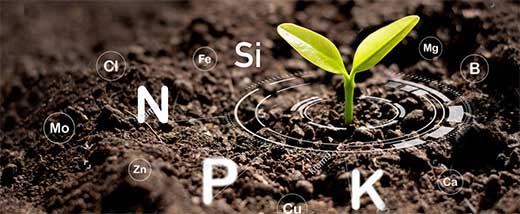
Silicon is the third-most abundant trace element in the human body[3] and essential for proper healing and repair of injured ligaments, tendons and joints. This is believed to be because of its role in the making of collagen in the body.[4] Silicon exists in various forms, with most of the silicon in the body in a form called “orthosilicic acid.”[5] When stabilized with choline (a vitamin-like essential nutrient), orthosilicic acid is the safest and most orally bioavailable (meaning easily absorbable) form of silicon.[6] Multiple studies have shown favorable correlations between intake of orthosilicic acid and the health of connective tissue,[7] as well as other potential health benefits to the immune system, including possible prevention of osteoporosis and Alzheimer’s disease, and the improved health of hair, skin, and nails.[8]
The Story of Doctor's Formula LigaGenix®
It is important that patients receiving Prolotherapy treatment get adequate nutritional support after their procedures. Over the years, I had recommended various brands and types of nutritional supplements for this purpose. At one point, I thought I had found a good supplement and was recommending it to patients, but then the manufacturer changed it from capsules to hard tablets, which were not as easily absorbable. I began getting negative feedback about this product from my patients and so called the representative for the supplement company, who I knew fairly well, to give him my input. He listened politely, then said, “I’m sorry, Dr. Alderman, thanks for your opinion, but we’re not changing the tablet; it’s a money thing.” That bothered me. I thought “Really?” This was a moderately sized company, and it didn’t make sense to me that they wouldn’t be willing to spend a few more cents to get a better product. I started looking for another brand to recommend, but other than this last supplement, which wasn’t perfect either, I had not found any one specific supplement that had all the ingredients needed in one formula—with some formulas having extra and unneeded ingredients. Since many of my patients were already taking basic vitamins, I was reluctant to recommend a number of additional supplements. So, I decided then to develop a comprehensive, better product, using the nutritional training I had received as a student at Cornell, and in 2010, LigaGenix was born.
This all-in-one supplement has the nutrients and micronutrients needed to support collagen repair, including the very important choline-stabilized silicon. Specifically tailored for patients receiving Prolotherapy regenerative injections to optimize healing afterwards, LigaGenix is also taken, at lower doses, for maintenance of connective tissue health in general, and has had excellent patient feedback since its development.
For more information, visit LigaGenix.com
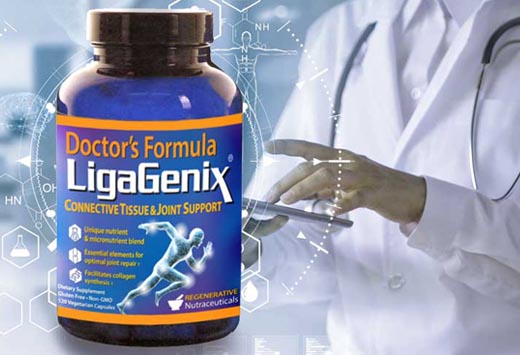
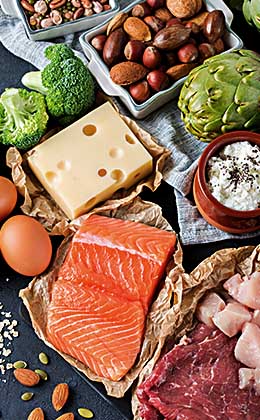
The Importance of Dietary Protein
There is a relationship between inadequate protein consumption and chronic pain. In fact, patients with chronic pain often have a diet high in carbohydrates and low in protein.[9] This lack of protein in the diet can lead to an inability of our bodies to maintain enough of the building blocks (amino acids—a component of protein) needed to rebuild collagen. On top of that, amino acids are used to make our bodies’ own natural painkillers, such as endorphins, which you may have heard about. Endorphins (from “endogenous” meaning “contained within” and “morphine,” which is a strong painkiller) are “morphine like substances originating from within the body.”[10] We naturally make endorphins in response to pain or stress, after vigorous exercise (i.e., endorphins are responsible for “runners” high), or after eating certain foods such as chocolate. If there is too much pain or stress, the body can use up available endorphins, and if there is a lack of the right kind of protein in the diet to keep up and make more endorphins, then pain levels increase. Other natural painkillers our bodies make from protein amino acids are serotonin and gamma amino butyric acid (known as “GABA”), both important for relaxation, sleep, and mood. The bottom line is that taking the right type of amino acids, either in the diet or supplement form, may be able to help reduce pain.[11] For more information on the importance of protein for chronic pain, see the article by Julia Ross in Practical Pain Management Journal found at: PracticalPainManagement.com - Amino acids and diet in chronic pain management.
EndorphiGen®
Almost forty years ago, a researcher at Chicago Medical School found that adding a certain amino acid to pain patients’ diets lowered that patients’ need for opiate pain medications.[12] As it turns out, the amino acid he added was found to increase the patient’s natural endorphin levels, so that their need for pain medication decreased. The way that works is complicated, but the short explanation is that this particular amino acid works to block the breakdown of our own natural endorphins so these are available longer. This discovery eventually resulted in the formulation of a commercially available supplement called “EndorphiGen” made by Lidkte Labs that contains an amino acid similar to the one used in that Chicago Medical study.[13] This supplement is designed to raise one’s natural endorphin levels and has been found to be very helpful for reducing pain in some patients.
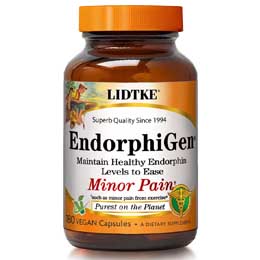
Food Allergies and Joint Pain
Food sensitivities and allergies seem to play a part in the development of joint pain.[14] Individuals can be allergic to foods eaten on a regular basis without showing any obvious symptoms. This type of allergic reaction is more subtle, but can eventually result in joint inflammation and pain. The trouble is that these symptoms might emerge days or even weeks after the offending foods were eaten, which makes these type of food allergies more difficult to diagnose.
Fortunately, there are remedies. Anti-inflammatory foods, food-allergy blood testing, and change in dietary patterns have all been used successfully to treat pain syndromes.[15] It has been well established that gluten, a protein present in grains such as wheat, rye, and barley, can produce a range of negative reactions, including skin responses such as hives or rashes, as well as other allergy-type reactions—from minor sinus congestion and sneezing to much more serious sudden, potentially fatal, allergic responses.
While many of these reactions might occur immediately after ingesting gluten, severe autoimmune (the body fighting itself) reactions often emerge years after the initial gluten exposure.[16] Gluten sensitivity has also been linked to arthritis,[17] low back pain,[18] and other joint and muscle pain.[19]
If you have persistent joint pain, consider getting blood tested for food and gluten allergies, which can be done through a simple blood test. One company, Immuno Laboratories, offers a very comprehensive food and gluten allergy analysis (www.immunolabs.com). Even without a specific blood test, a person could try a gluten-free diet to see if pain improves. While not always easy to be “gluten-free” in today’s world, awareness of this condition is increasing, and more options are available in restaurants and grocery stores.
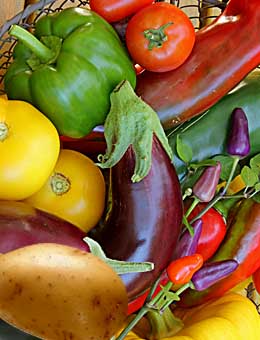
Nightshades and Joint Pain
A particular family of foods known as “nightshades” (because of these plants preference to grow in the shade and flower at night) has been recognized for many years to cause debilitating arthritis in animals.[20] Similar phenomena have been observed in some (but not all) humans. This family of foods includes eggplant, peppers (all kinds except black), potatoes, tobacco, tomatoes, and spices such as cayenne, chili, curry, paprika, and ground red pepper. The nightshade family has been implicated in muscle spasm as well as in joint pain and stiffness.[21] In patient studies, avoiding these foods resulted in some improvement—or even marked improvement—in joint pain and arthritis symptoms for some patients.[22] Of course, these foods are integrated into much of the American lifestyle, and so they are rather difficult to avoid. However, if you’ve had persistent joint or muscle pain, you could try eliminating these foods from your diet for four to six weeks just to see how you respond.
Other Natural Remedies for Joint Pain
Glucosamine: In 2001, the well-respected medical journal The Lancet published a long-term study that looked at the effect of glucosamine in slowing the progression of osteoarthritis (OA), showing significant improvement in pain for the group taking 1,500 mg of glucosamine sulfate per day.[23] Of course, again, there was controversy, with other authors contesting those results and contending no benefit existed.[24] However, the anti-inflammatory medication celecoxib (Celebrex), an NSAID, was compared to a combination of glucosamine and chondroitin. In that study both the supplement combination and the NSAID were concluded to have “comparable efficacy in reducing pain, stiffness, functional limitation, and joint swelling/effusion” in knee OA.[25]
Cetyl myrisoleate (CM): In 1962, arthritis research done at the National Institutes of Health brought about the accidental discovery of another potentially effective supplement. A certain type of mouse was found to be resistant to developing arthritis. Further investigation revealed that this mouse had something the other lab animals did not: a fatty acid named cetyl myrisoleate (CM).[26] CM was then extracted for use in humans, studied, and found to safely offer significant benefit for some, but not all, people with arthritis.[27]
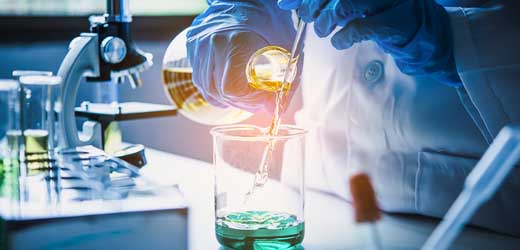
Green-lipped mussel: Another arthritis remedy was uncovered when it was noted that coastal-dwelling natives in New Zealand have an extremely low incidence of joint pain and arthritis as compared to individuals living further inland.[28] It was found that the coastal group heavily consumed the green-lipped mussel, which happens to contain omega-3 polyunsaturated fatty acids. Multiple studies have shown these mussels (or their oil extract) to safely decrease joint pain with no real side effects.[29] As with CM, the magic of the green-lipped mussel may not work for all people.
SAM-e: Still another potentially helpful supplement is SAM-e (short for S-adenosyl methionine)—a substance found naturally in the body. Used since the mid-1970s for arthritis, SAM-e also seems to have a positive effect on mood. A double-blind study of 734 patients, including 582 with OA of the hip or knee, compared taking SAM-e to the NSAID naproxen (Aleve). In that study, SAM-e was shown to be as effective as naproxen but with fewer side effects.[30] Another double-blind study of patients with OA showed SAM-e to be as effective as the anti-inflammatory medication ibuprofen (Advil, Motrin) for reducing pain and increasing mobility.[31] The report, published in the Journal of Family Practice, concluded, “SAM-e appears to be as effective as NSAIDs in reducing pain and improving functional limitation in patients with osteoarthritis without the adverse effects often associated with NSAID therapies.”[32]
Omega-3 Fatty Acids: Finally, omega-3 essential fatty acids (EFAs) have shown promise in helping with pain. One study of arthritis patients compared using omega-3 EFAs versus the NSAID ibuprofen and found EFAs were as effective as ibuprofen in reducing arthritic pain.[33] As an added bonus, omega-3 EFAs have been associated with other health benefits, such as lower cholesterol[34] and blood pressure,[35] and, most recently, improved cognitive function.[36]
The bottom line is, as Hippocrates appropriately advised, “Let food be thy medicine, and let thy medicine be food.” While not the complete answer, nutrition plays an important role in healing, joint health and pain conditions. Improving one’s diet and/or nutritional support is a low-risk endeavor: usually little is to be lost. While making positive changes or trying a particular nutritional approach may not work for everyone or every situation, when a change does help, it has the potential to make an impact on the quality of one’s life.